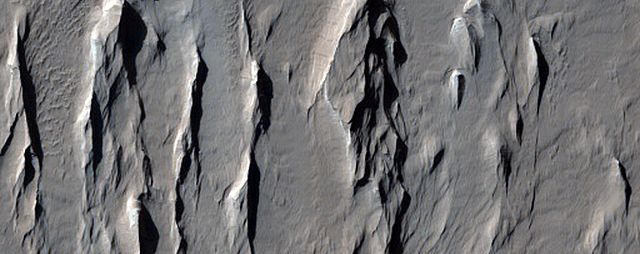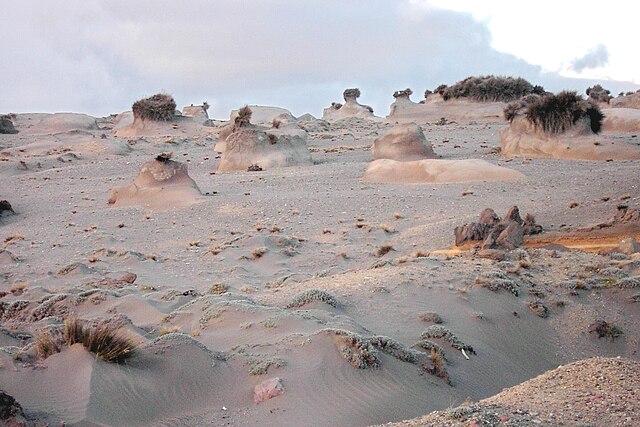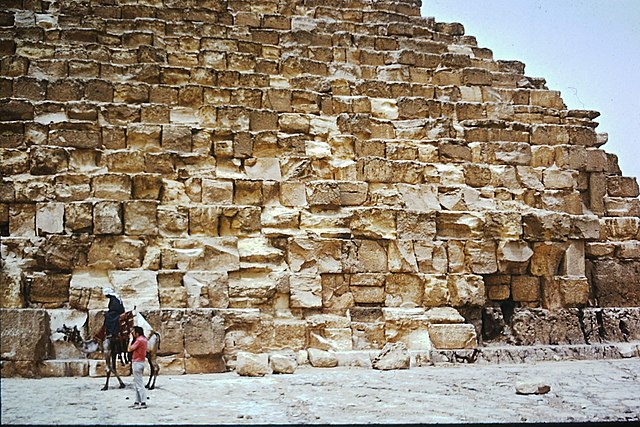A yardang is a streamlined protuberance carved from bedrock or any consolidated or semiconsolidated material by the dual action of wind abrasion by dust and sand and deflation. Yardangs become elongated features typically three or more times longer than wide, and when viewed from above, resemble the hull of a boat. Facing the wind is a steep, blunt face that gradually gets lower and narrower toward the lee end. Yardangs are formed by wind erosion, typically of an originally flat surface formed from areas of harder and softer material. The soft material is eroded and removed by the wind, and the harder material remains. The resulting pattern of yardangs is therefore a combination of the original rock distribution, and the fluid mechanics of the air flow and resulting pattern of erosion.
A yardang near Meadow, Texas (33°19′16″N 102°29′42″W / 33.321°N 102.495°W / 33.321; -102.495) (USDA photo).
Yardangs in the Qaidam Desert, Qinghai Province, China.
Yardangs on water in the Usut Yardang Geological Park, Qinghai, China
Yardangs in Lucus Planum (Mars)
Aeolian processes, also spelled eolian, pertain to wind activity in the study of geology and weather and specifically to the wind's ability to shape the surface of the Earth. Winds may erode, transport, and deposit materials and are effective agents in regions with sparse vegetation, a lack of soil moisture and a large supply of unconsolidated sediments. Although water is a much more powerful eroding force than wind, aeolian processes are important in arid environments such as deserts.
Wind erosion of soil at the foot of Chimborazo, Ecuador
Rock carved by drifting sand below Fortification Rock in Arizona (Photo by Timothy H. O'Sullivan, USGS, 1871)
Sand blowing off a crest in the Kelso Dunes of the Mojave Desert, California
Effects of wind erosion at Giza pyramid, May 1972








